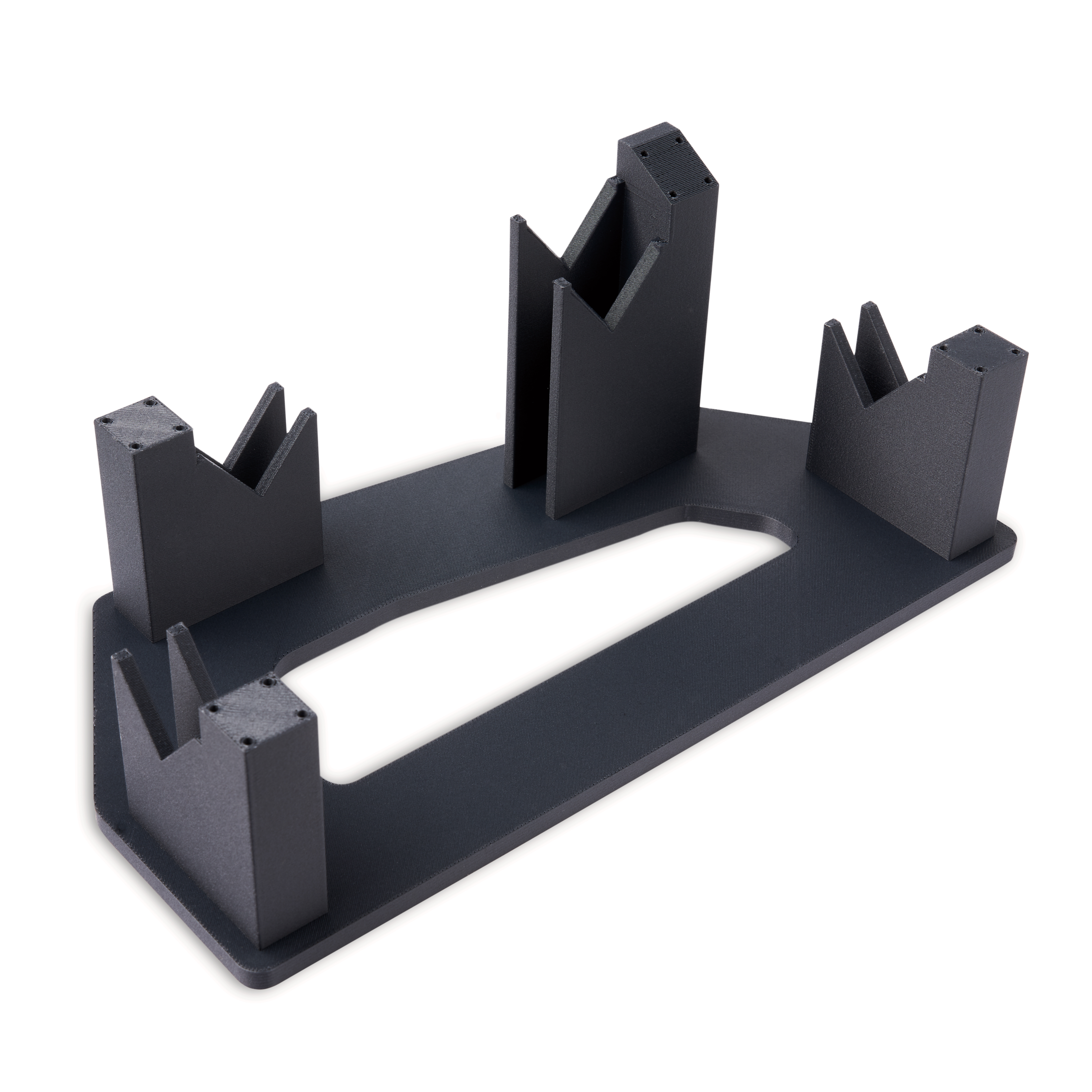
Stratasys has introduced a new acrylonitrile butadiene styrene (ABS) based carbon fiber material for its 3D printers.
According to the company, this is the first composite material it has made for its F123 series of machines. Carbon fiber materials have already been used on the company’s industrial-scale 3D printers for a variety of end-use applications such as jigs, fixtures, and tooling. According to Stratasys, the additive manufacturing (AM) market for these parts is expected to grow at a 14.2% annual rate between 2019 and 2023, to nearly YS$600 million, double the growth rate of the prior four years.
The new fused deposition modeling (FDM) ABS-CF10 composite features 10% chopped carbon fiber and is reportedly 15% stronger and more than 50% stiffer than standard ABS, without the weight of metal. It can be printed with Stratasys’ water-soluble supports and is suitable for applications in the aerospace, automotive, industrial, and recreational manufacturing industries. Potential parts include end effectors used with industrial robots, ergonomic aids such as lift assists and hand tools, and alignment fixtures on assembly lines, the company said.
‘There is a reason why manufacturers are increasingly turning to 3D-printed carbon fiber materials,” said Stratasys senior VP Dick Anderson. ‘It’s incredibly strong, versatile, and lightweight. […] Introducing FDM ABS-CF10 is a significant step in growing 3D printing’s presence in the global manufacturing industry.’
This story uses material from Stratasys, with editorial changes made by Materials Today. The views expressed in this article do not necessarily represent those of Elsevier.





